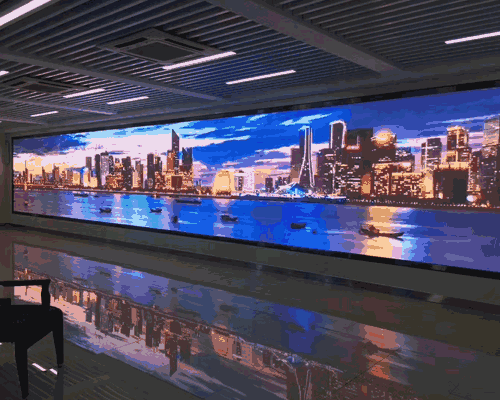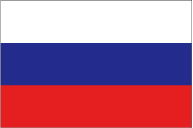Recently, the industrial structure and product strength of the LED display industry continued to improve. However, as the industrial upgrading and transformation continued to accelerate, and the overall saturation of the market, and the performance of the recent screen enterprises showed various aspects of the market situation, the next industry " The new normal" - the future terminal market may be difficult to have explosive growth demand, will continue to be in a "consolidation" stage, screen enterprises must rely on their own product updates or application innovation to complete profit growth, China LED display The era of big integration of the screen industry has come. At the same time, there are three obvious development trends under the industrial background of this “new normal”.
Trend 1: Segmentation of branding patterns
The LED display industry segmentation market pattern has already begun. Recently, there are some small and medium-sized screen enterprises that have outstanding performance in a certain sub-sector, such as the rapid rise of the "ice screen", the optoelectronics, specializing in the export of indoor display applications. Asahi, leading Aleda in the field of transparent screen fixing, etc.; in addition, the layout of several leading screen companies in the industry to use sub-companies to develop sub-category market is becoming more and more clear: Lia Li's Jin Lixiang is in the high-end engineering field. Leading the way, the company is the Redio, a subsidiary of Chau Ming Technology, which is responsible for the LED rental display and LED creative display products market... They have accumulated a solid brand foundation in their main segments. It shows a phenomenon: the industry's various sub-category brand patterns are forming, and the growth of strong brands is very strong.
The current industrial form is that a number of representative screen enterprises have appeared in various sub-categories, forming a group of representative industry brands. Some have seized the barriers of industrial upgrading and successfully completed their own adjustments; some have chosen the right market segments and quickly become well-known brands in the field, and some have successfully built the “big car” of the leading screen enterprises and have strong backups; these screen enterprises Whether it is scale, development growth, or brand reputation has begun to lead significantly, and often such a brand can represent an extreme market segment. For example, when it comes to small-pitch TV, it is difficult to circumvent Liard, saying that transparent screen dance beauty can definitely think of counterfeit optoelectronics.
Therefore, the small and medium-sized screen enterprises that want to make a difference must quickly obtain a favorable brand positioning in the segmentation category and make the products to the extreme, otherwise they will face homogenization competition in the fields familiar to the opponents. Situation.
Trend 2: upgrade with the same segment of products, increased competition
It is worth noting that although the segmentation category has formed a strong brand, this does not mean that there is no challenger. Because the same type of products in the industry, regardless of the hardware facilities or solutions, are developed in multiple categories and even diversified. Especially in the small-pitch field, product upgrades, extreme segmentation, and increased brand competition have become an irresistible trend.
On the one hand, with the intensification of industrial transformation and upgrading, end-users' awareness of products and markets is becoming more and more mature. The price is no longer the main factor that feels whether it is purchased. The performance of products has become the main criterion for market consideration. Especially for the small-pitch products in the mid-to-high-end market, not only the quality and performance requirements are raised, but also the individualized demand is further released. This downstream market demand change is also stimulating the upgrade and optimization of small-pitch products of upstream manufacturers, and promotes further subdivision of their products, such as small-pitch advertising machines, small-pitch TVs, small COB spacing, outdoor small spacing, small spacing. Subsequent products and applications such as leasing appear one after another.
On the other hand, with the continuous improvement of small-pitch technology, the definition of small-pitch in these two years has been constantly refreshed. At present, the products below P2.5 have been regarded as conventional products, and the industry's definition of small spacing has been refreshed below P2. This also indicates that the watershed of the small-pitch industry has arrived, because the small spacing below P2 requires manufacturers to replace equipment, which is very difficult for small and medium-sized manufacturers with insufficient capital chain and insufficient product development strength, because not only Only with a high level of small-pitch R & D design capabilities, while the need to replace production equipment has also greatly increased the screen capital into the small spacing field of funding threshold.
This means that many low-end production capacity in the small-pitch industry is likely to be eliminated, and even some manufacturers that have already replaced production equipment will face capacity pressure. How can there be insufficient capacity to support cost reduction? The phenomenon of subdivided product upgrades and intensified competition is not only in the small-pitch field, but also in the transparent screen field. The differentiated market is further subdivided. The fierce competition is accelerating product upgrades and also prompting screen companies to rack their brains to become the ultimate product and application. Such as subdivision, this will become a major development trend of the next industry.
Trend 3: Strong channels and multiple channels coexist
The channel competition in the LED display industry has never subsided, especially as the screen companies continue to expand the dealer system into major cities across the country, and even extend their reach to the county-level market, the channel market is becoming more and more popular. In the recent period, the listed screen enterprises have accelerated the layout of the channel market, and the channel market has become more heated. Liard and Zhouming do not need to say that they have strong strength. They also have strong brand influence when they return to the channel market. And the cooperation between Abbison and Powerful Color also makes each other more competitive. In addition, in recent years, there have been some screen companies that specialize in segmentation channels, and the situation of strong channels and multiple channels coexisting is becoming more and more clear.
It is worth noting that although many screen companies have become strong channels, the diversification of channels in the LED display industry is accelerating. Open policies such as the “Belt and Road” have made screen enterprises turn their attention to a broader overseas market. In recent years, more and more screen enterprises have gradually stepped out of the country to open up new channels and new markets overseas. The strong alliance has won the screen for enterprises. Adding new ways to the regional channel market, in addition to many screen companies that have matured or are developing segments, such as Ai Biesen’s hotel screen business, China Guangcai’s leasing business unit, etc. The diversification is an opportunity and a challenge for a large and powerful enterprise. Screen enterprises can speed up the layout in terms of omnichannel. Of course, for brand-screen enterprises that take a differentiated business route, they can choose one or two channels for deep cultivation.
At present, from the perspective of industrial structure, China's LED display has gradually changed in recent years. The specialized division of labor in the industry is taking shape: manufacturers focusing on display production, market channel sellers, and engineering installation after-sales service operators. Specialized enterprises have emerged, and a clear division of labor, close cooperation, and a win-win situation are being formed. The specialized division of labor is conducive to perfecting, expanding, and strengthening, and has positive significance for promoting the healthy development of the entire industry. At the same time, in the process, with the continuous optimization and development of the industry, the terminal products will be more diversified and refined, and the market will also be through several rounds of competition and elimination, eventually forming several leading screen enterprises and multiple “ High-precision companies will hold the overall situation, and a group of small and medium-sized enterprises will compete for the remaining market. For the entire LED display industry, it will be a big leap-forward development.


 America
America Russia
Russia





